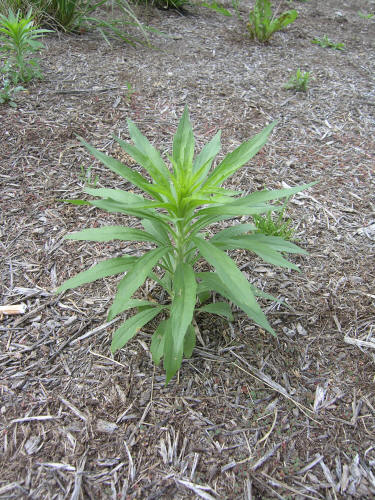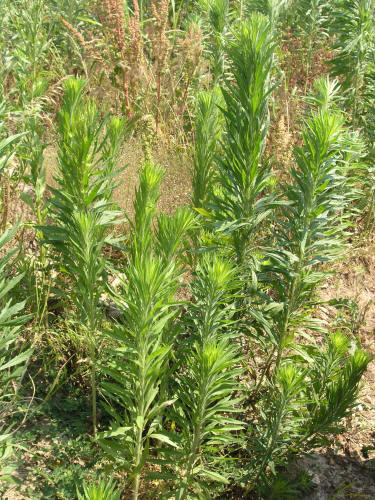Horseweed
Horseweed, Mare's tail, Canada Horseweed
[Conyza canadensis (L.) Cronq.]
Asteraceae (Sunflower Family)

▲ ▼ young plants
▲ ▼ young plants

▲ ▼ young plants
▲ ▼ young plants

▲ ▼ mature plants
▲ ▼ flowering plants

▲ ▼ flowering plants
▲ ▼ flowering plants

▲ ▼ flowering upper portion of plant
▲ flower detail
▲ vacant lot with many mature plants
▲ prairie restoration with many horseweed plants near its border
▲ ▼ mature, flowering and post-flowering plants starting to release seeds
▲ ▼ drying, post-flowering plants in the autumn
Conyza canadensis (L.) Cronq., Horseweed, Marestail: (Bayer Code: ERICA; US Code COCA5)
- U.S. native summer annual that grows 2-7 feet tall
- Usually unbranched (unless mowed or grazed), and stems and leaves are covered with fine hairs that stand out from the stems/leaves
- Leaves alternate, lanceolate, narrow, with a few teeth along the margins and a pointed tip; leaves often look wilted or droopy, particularly in heat of summer or on warm, windy days
- A large, much-branched panicle of small, white flower heads is produced at the top of stems; head flowers don’t open very much
- After flowering, white pappus (“parachutes") emerge from flower heads to carry attached seed in the wind
- Horseweed may be allelopathic--where it is established, little else grows
- Several populations have been indentified in U.S. that are resistant to common herbicides
- Is invasive; reproduces rapidly by seed
- Grows in cultivated fields, pastures, urban areas